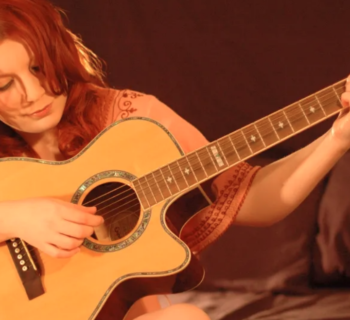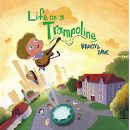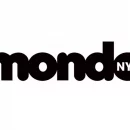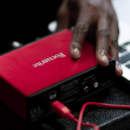 I’m working on building global radio presence with the end goal of developing solid touring markets for when things get back to normal. As I acquire radio station airplay adds I track them with a spread sheet I've compiled that shows each station, their physical location, main genre/genres, their broadcast territory, as well as, which of my songs and mixes were added to their libraries. I also keep track of all the charts and positions I’ve made. When the time comes where touring makes sense again, this information will help find a top tour promoter and will help my PR agent obtain the proper radio and media support to assure a successful tour.
I’m working on building global radio presence with the end goal of developing solid touring markets for when things get back to normal. As I acquire radio station airplay adds I track them with a spread sheet I've compiled that shows each station, their physical location, main genre/genres, their broadcast territory, as well as, which of my songs and mixes were added to their libraries. I also keep track of all the charts and positions I’ve made. When the time comes where touring makes sense again, this information will help find a top tour promoter and will help my PR agent obtain the proper radio and media support to assure a successful tour.
My goal is to build loyal station support in as many markets as possible while hoping to remain visible on the global airplay charts. To achieve this I've had to consistently put out my best songs and recordings. Fortunately, I've now achieved a solid string of releases charting on both the global Rock, Pop and Adult Contemporary top 50 airplay charts. I’m competing with the major labels and winning, many times as the only independent artist even in the top 50. This has resulted in thousands of weekly over-the-air radio spins on some of the world’s largest radio stations. However, it hasn’t been an overnight success story and I still have to string it all together with my team to make a successful tour. Assembling a team is difficult. There’s a lot work on both sides that goes into building solid mutually beneficial relationships. Let me focus here instead on what’s worked for me in songwriting and recording.
“As I acquire radio station airplay adds I track them with a spread sheet I've compiled that shows each station, their physical location, main genre/genres, their broadcast territory, as well as, which of my songs and mixes were added to their libraries."
When it comes to songwriting, I like to focus on the lyrics. I spent several years hosting a very well attended weekly open mic and after putting hundreds of songwriters on stage, I am convinced that even the most novice among us usually can construct a competitive chord progression with an interesting melody to accompany it. What separates the “A” list from the pack is usually lyric and story content. A song without a relatable story is just a bunch of random thoughts, words and rhymes that will make no sense to the listener. Even the best hook will fall flat without a story to accompany it.
To remedy that, when I get a new song idea, I like to put together a quick story outline. It can be as simple as a few scribbled lines on a napkin or scrap of paper you may have laying around where you write. The outline should be what you plan to communicate during each section of your say. As an example, in the verse you tell the listener that you think you love them, in the chorus you tell them why you think you love them, in the bridge you communicate why you were afraid to tell them sooner, and you end by telling them that now you’re sure you love them. Now simply create the lyric content which tells the story you’ve outlined.
For me, telling a coherent story was where I was failing as a songwriter. It took a long time to figure this out. To help you learn faster, try this exercise: take one of your favorite songs from a successful artist and write an outline of what you think they were trying to communicate in each section of their song. You’ll find that your outline of their song frames a coherent and relatable story. Your interpretation may not be exactly what the songwriter was trying to communicate, however, with the work you’ve just done plotting the hit song’s storyline you should be able to write a song with just as good a storyline.
Next, using rhymes that are fresh and not overused and predicable, I focus on trying to say things differently from what’s been said before. Nothing is a bigger turnoff to a listener than when they hear a song for the first time and can predict all the rhymes before they come up. When I must use a more basic rhyme, I like to use half-rhymes in the lines preceding and just after to take away the predictability of that predictable rhyme. Come up with your own favorite methods but be fresh and be real.
Also, don’t be afraid to rewrite lyrics. Instead of thinking of it as a rewrite, think of it as a fine tuning of your lyrics. Don’t be in a hurry to call a song finished until you know it’s as good as it can be lyrically. If you can, play the song to an audience for feedback. As host of that open mic I mentioned earlier, besides putting the nights songwriters on stage I also opened the night with a 3-song set. It was a large noisy reflective room with a typical audience of around 80, the majority being high school aged kids who came to socialize. Sometimes I would play whatever song I was working on at the time with my eyes closed and listen to the audience’s reaction while I performed. Any song section where I heard a lot of talking and socializing, I would take note of and try to rewrite better for the next week. I would continue this fine-tuning week after week until I could hear silence throughout my performance.
Last, if you work hard on your songwriting it’s probable that you’re like me and are not the best multi-instrumentalist, producer, engineer, and jack all trades when it comes to making pro quality recordings. Like me, you probably need some help. The people who work hard at learning this craft are always looking for folks like us. When the time comes to record, don’t be afraid to reach out and look for those types of individuals for help. I am fortunate to work with Michael Bradford (Deep Purple, Kid Rock, New Radicals) who is a world-class producer with a string of hits. I was familiar with his work and could predict how his touch might elevate my songs. I also had the maturity to understand that it could take recording a few serious records together before we found that sweet spot. Don’t be afraid to be patient, that sweet spot is worth finding.
Visit the artist at avsupersunshine.com














